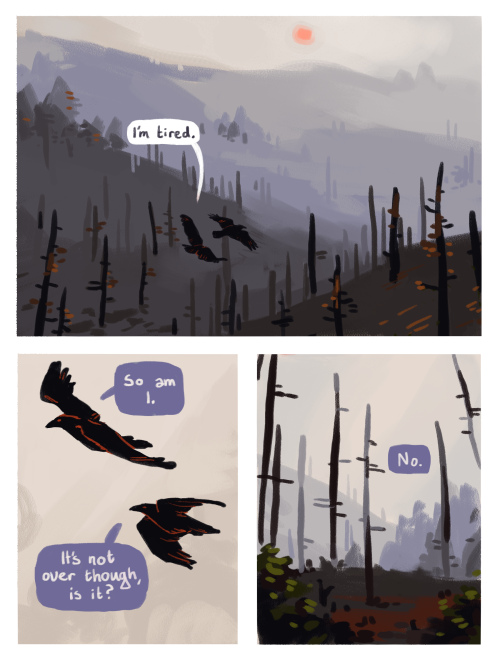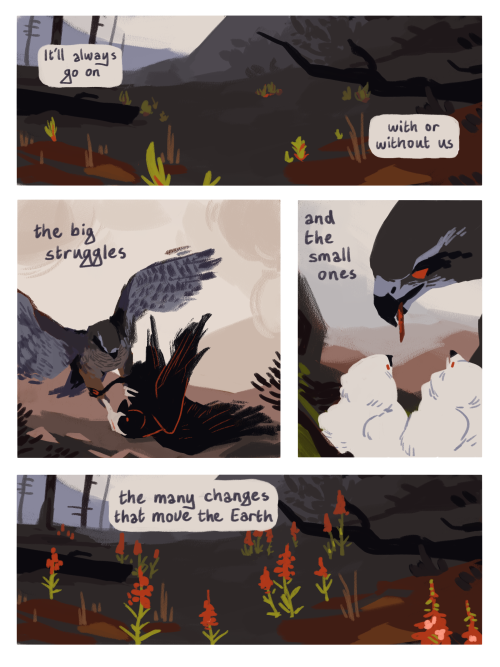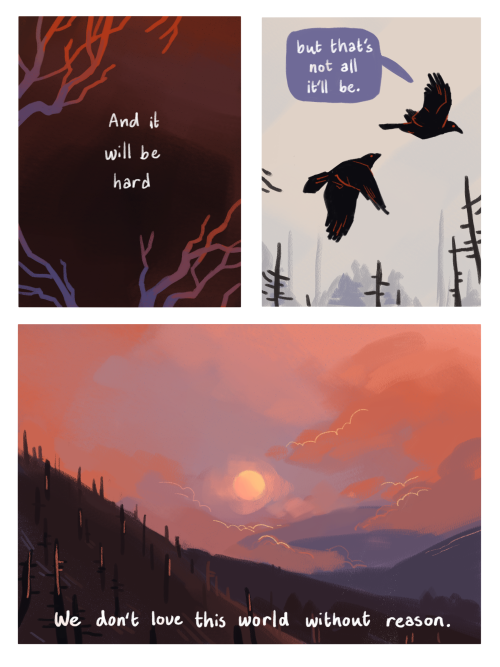Feeling Rather Ouija-bored Myself These Days...
Feeling rather ouija-bored myself these days...

The Nashville Tennessean, Nashville, Tennessee, April 7, 1920
More Posts from Shamrockskullscarabs and Others
do you ever just accidentally stumble across the most delicious sentence in the middle of a book and are forced to stop just to revel in its beauty??
Enrique of Malacca
Circumnavigating the world is no easy feat, especially when the world’s geography was so uncertain in the past. And while the world celebrates Magellan’s effort and success, Malaysians take pride in its success in honour of an entirely different person, known simply as Enrique of Malacca or Henry the Black.

Statue of Enrique in the Maritime Museum of Malacca, Malacca City, Malaysia. Photo obtained from Wikipedia.
A voyager of Malay descent, Enrique met Magellan when the Portuguese conquered Malacca in 1511, putting Enrique under Magellan’s workforce as his slave. In 1519, Enrique was enlisted in Magellan’s fleet to set sail around the Earth primarily due to his ability to speak the Malay language (which was the lingua franca of the region at the time). He accompanied Magellan throughout the expedition until the Battle of Mactan and Magellan’s death, after which he left the Magellan expedition on 1st May 1521 with the presumed intention of heading back to his homeland.

The route taken by the Magellan expedition, with milestones highlighted. From Cebu, had Enrique returned back to his home in Malacca, he would have been the first person to circumnavigate the Earth. Photo obtained from Wikipedia
Though there are no concrete records of Enrique after he left the expedition, there lies the possibility that he may have been the first person to circumnavigate the globe instead of the Magellan expedition. In order to claim the title, Enrique would have to reach his homeland which is considered HIS starting point instead of going back to Spain before September 1522, which is when the Magellan expedition entered Spain through Sanlúcar de Barrameda, their starting point when they first started the journey. However, as no record ever made light of this matter, it is currently unknown whether Enrique ever did make his way back to his homeland or lost his way somewhere.

Cebu island in the Philippines. The last place where Enrique was recorded alive after he left the Magellan expedition. Photo from Wikipedia.
While the truth of Enrique’s fate may present itself in the future, it is still a national pride that a native of Malaysia from Malacca managed to be a part of one of the most historical maritime expeditions of the early 1500s.
Zombie setting where the undead are drawn towards unhygienic scents, so survivors constantly bathe to avoid being eaten.
Zombies are docile when adorned with flowers.
Settlements overgrown with herbs and flora.
Barely any banditry; everyone is focused on farming and gathering.
Different human factions and towns named after flowers like Lilies, Orchids, Roses, etc.
Instead of immediately killing an infected survivor, they’re given special funeral rites - the zombie is covered with flowers to keep them calm, and allowed to walk out from the settlement to join the hordes.
Book Review: Informania: Ghosts by Christopher Maynard (2000)

Title: Informania: Ghosts
Author: Christopher Maynard
ISBN13: 9780744577105
Informania: Ghosts offers a brief introduction to everything ghost-related from ghost hunting to films about ghosts. Suitable for young readers and enthusiastic adults alike, the book is divided into five sections:
An abridged version of Algernon Blackwood’s “The Empty House”. Short but suspenseful nevertheless.
A scrapbook by famed ghost hunter Dee Bunker detailing her findings and favorite cases. Dee talks about her experience, her golden rules of ghost hunting, and more.
A tour booklet through the National Museum of Phoney Ghosts. Led by Sir Ghastlie Mones, visitors will see how some of the best ghost sightings can also be the worst scams imaginable.
A Fright Night film guide for all ghost-related movies. Not necessarily horror, but the listing is quite interesting no less, with line-ups like The Cat and the Canary (1927), The Ghost of Frankenstein (1942), and A Chinese Ghost Story (1987).
A handy reference guide to all things ghost-related such as a timeline of hauntings, a map detailing different variants of spooks, and even an internet listing for further reading.
The book itself is quite entertaining and good for early exposure to the world of the paranormal. However, since it was published in 2000, some of the information present within the book may be outdated.
Happy Hauntings!
Imagine you're a writer, and there are people scribbling in the margins of your books, underlining their favorite passages, leaving makeshift bookmarks between the pages (subway tickets, library receipts, handwritten notes), reading excerpts out loud to their friends and lovers or to themselves just to feel the words on their tongue, memorizing quotes and then copying them in their notebooks, daydreaming about your characters and excitingly speculating about what's going to happen to them in the sequel, writing reviews in their school newspaper.
-
 darkaengel reblogged this · 2 months ago
darkaengel reblogged this · 2 months ago -
 lordofthesufferings liked this · 2 months ago
lordofthesufferings liked this · 2 months ago -
 theiliad liked this · 2 months ago
theiliad liked this · 2 months ago -
 losermicah liked this · 2 months ago
losermicah liked this · 2 months ago -
 lavendulafaerie liked this · 2 months ago
lavendulafaerie liked this · 2 months ago -
 soulmvtes liked this · 2 months ago
soulmvtes liked this · 2 months ago -
 orphiclyre reblogged this · 2 months ago
orphiclyre reblogged this · 2 months ago -
 demonites reblogged this · 2 months ago
demonites reblogged this · 2 months ago -
 leadpipe liked this · 1 year ago
leadpipe liked this · 1 year ago -
 southerngothicfolkwitch reblogged this · 1 year ago
southerngothicfolkwitch reblogged this · 1 year ago -
 deathcultforsanta reblogged this · 1 year ago
deathcultforsanta reblogged this · 1 year ago -
 yesterwyndde reblogged this · 2 years ago
yesterwyndde reblogged this · 2 years ago -
 stcb13 reblogged this · 2 years ago
stcb13 reblogged this · 2 years ago -
 morexlovexmore liked this · 2 years ago
morexlovexmore liked this · 2 years ago -
 darkartcademia reblogged this · 2 years ago
darkartcademia reblogged this · 2 years ago -
 tiyuni liked this · 2 years ago
tiyuni liked this · 2 years ago -
 shamrockskullscarabs reblogged this · 2 years ago
shamrockskullscarabs reblogged this · 2 years ago -
 lemonimilkk reblogged this · 2 years ago
lemonimilkk reblogged this · 2 years ago -
 lemonimilkk liked this · 2 years ago
lemonimilkk liked this · 2 years ago -
 barbarbarain reblogged this · 2 years ago
barbarbarain reblogged this · 2 years ago -
 argon-skies reblogged this · 3 years ago
argon-skies reblogged this · 3 years ago -
 samanthropologist liked this · 3 years ago
samanthropologist liked this · 3 years ago -
 joannaface liked this · 3 years ago
joannaface liked this · 3 years ago -
 the-shooting-star liked this · 3 years ago
the-shooting-star liked this · 3 years ago -
 drkanthropologie reblogged this · 3 years ago
drkanthropologie reblogged this · 3 years ago -
 trademysteaks reblogged this · 3 years ago
trademysteaks reblogged this · 3 years ago -
 trademysteaks liked this · 3 years ago
trademysteaks liked this · 3 years ago -
 oumaez liked this · 3 years ago
oumaez liked this · 3 years ago -
 ace--of--arrows reblogged this · 3 years ago
ace--of--arrows reblogged this · 3 years ago -
 ace--of--arrows liked this · 3 years ago
ace--of--arrows liked this · 3 years ago -
 mandalaur reblogged this · 3 years ago
mandalaur reblogged this · 3 years ago -
 mandalaur liked this · 3 years ago
mandalaur liked this · 3 years ago -
 yeux-d-ange reblogged this · 3 years ago
yeux-d-ange reblogged this · 3 years ago -
 yeux-d-ange liked this · 3 years ago
yeux-d-ange liked this · 3 years ago -
 krankliu liked this · 3 years ago
krankliu liked this · 3 years ago -
 barbarbarain reblogged this · 3 years ago
barbarbarain reblogged this · 3 years ago -
 chancerino reblogged this · 3 years ago
chancerino reblogged this · 3 years ago -
 gaymerkittycat liked this · 3 years ago
gaymerkittycat liked this · 3 years ago -
 heyjadesprite reblogged this · 3 years ago
heyjadesprite reblogged this · 3 years ago -
 bittersweet-seventeen94 liked this · 3 years ago
bittersweet-seventeen94 liked this · 3 years ago -
 thehemlockreaper liked this · 3 years ago
thehemlockreaper liked this · 3 years ago -
 sunshineintomyveins liked this · 3 years ago
sunshineintomyveins liked this · 3 years ago -
 the-wee-woo-royal liked this · 3 years ago
the-wee-woo-royal liked this · 3 years ago -
 deprivedmusicaljunkie reblogged this · 3 years ago
deprivedmusicaljunkie reblogged this · 3 years ago

55 posts



